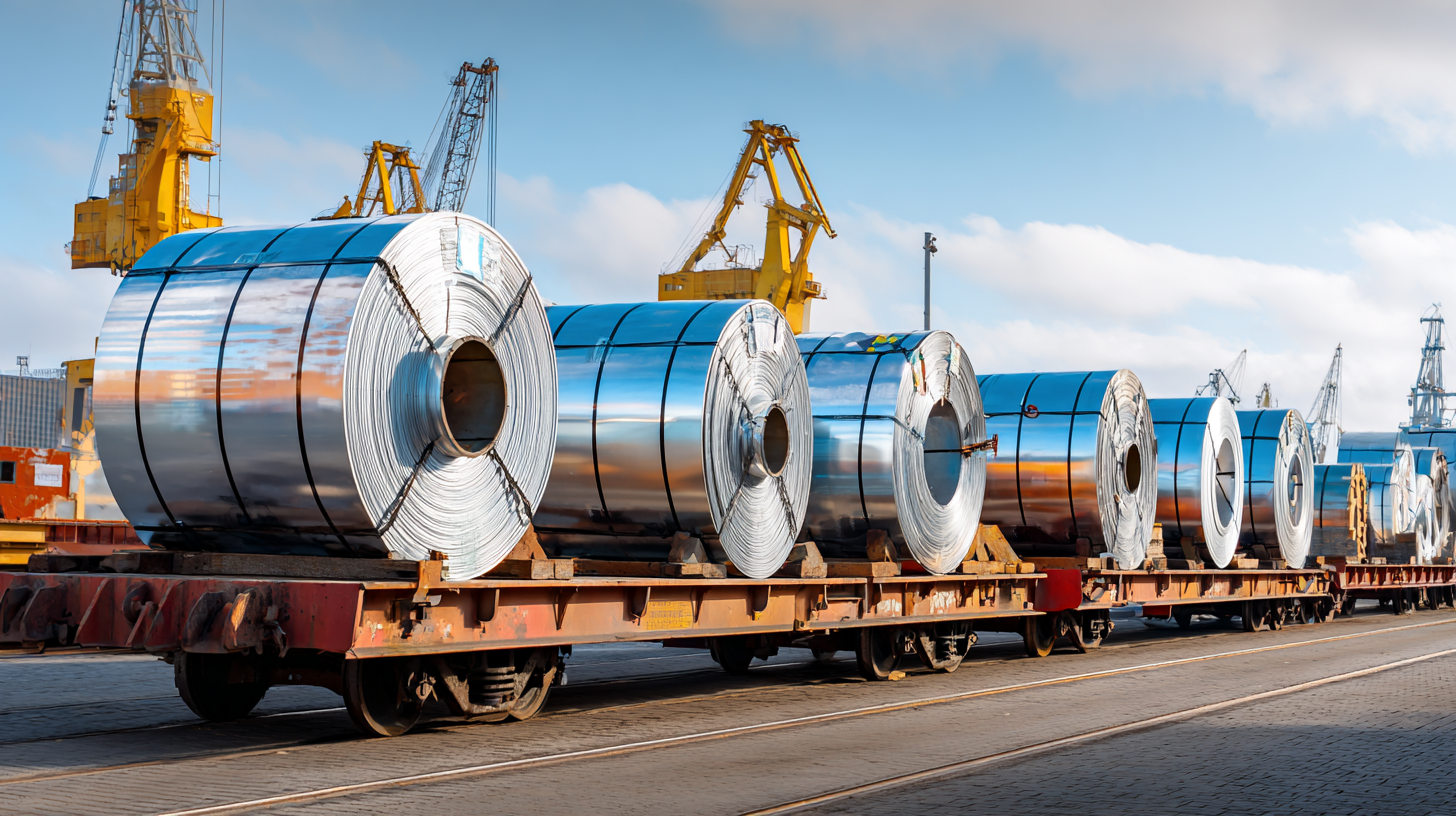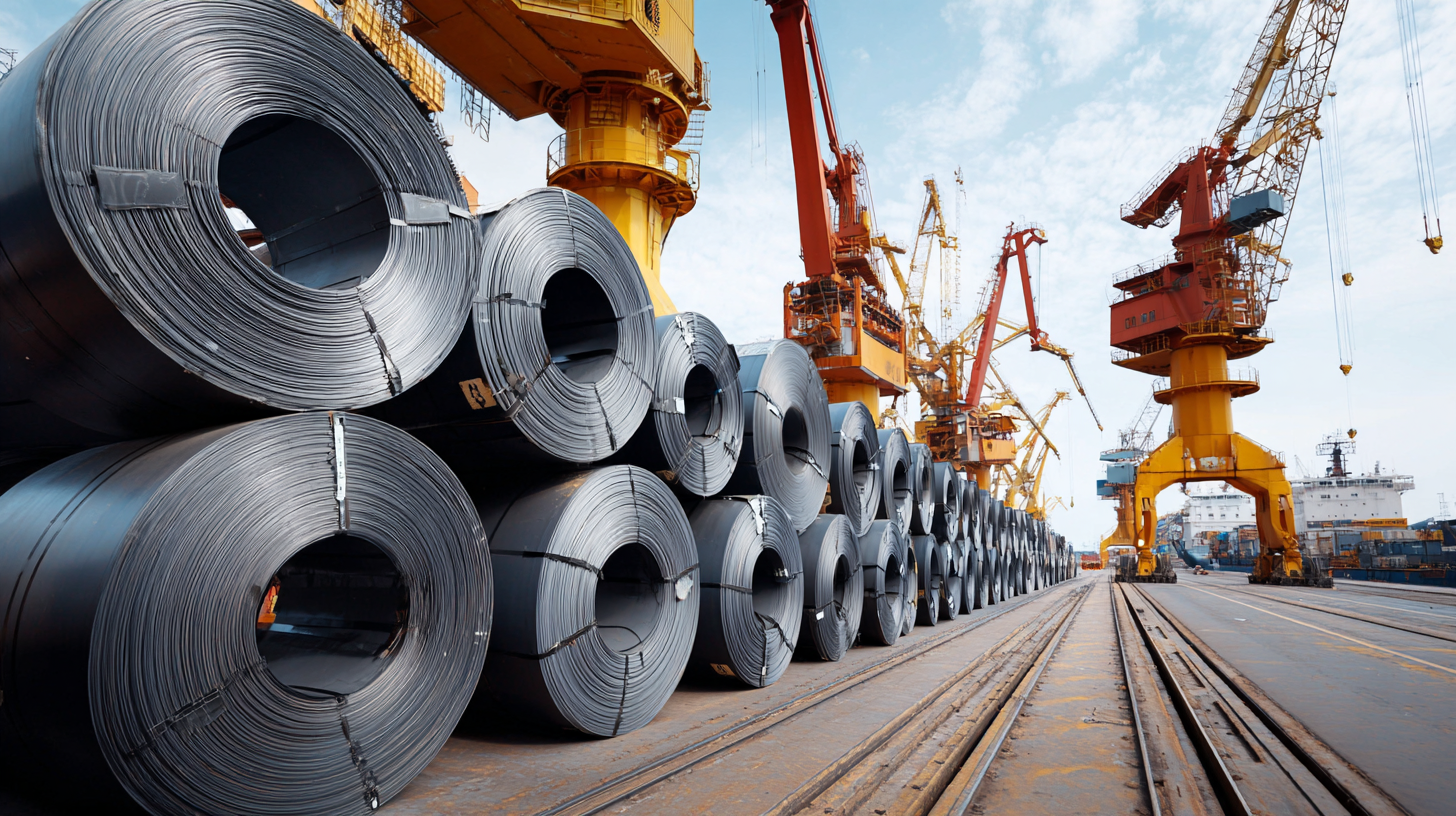Leave Your Message
-
Phone
-
E-mail
-
Whatsapp
In today's competitive market, understanding the intricacies of import and export certifications for Cr Steel Sheet is crucial for manufacturers and traders alike. The global steel market has seen a significant surge, with the World Steel Association reporting that global crude steel production reached over 1.9 billion metric tons in 2021. Among various steel products, Cr Steel Sheet has emerged as a key player, thanks to its superior corrosion resistance and excellent mechanical properties. However, navigating the certification processes can be daunting, especially with varying regulations across regions.

A recent study by IBISWorld highlighted that businesses lacking proper certification can face up to 30% delayed timelines in international shipments, impacting their competitive edge. Therefore, this blog aims to provide a comprehensive guide on how to effectively navigate the complexities of import and export certifications specific to Cr Steel Sheet.
When venturing into the competitive market of Cold Rolled (CR) steel sheets, understanding the importance of import and export certifications is paramount. These certifications serve not only as a guarantee of quality and compliance with international standards, but they also help to establish trust and credibility with clients and partners. With various regulations and requirements varying by region, navigating these can be daunting but is essential for success in the global trade arena.
Moreover, possessing the right certifications can significantly enhance a company’s marketability. In many cases, buyers are keen to work only with suppliers who can provide evidence of quality and safety through proper documentation. This is particularly true in industries that demand high standards, such as automotive and construction. By ensuring that your CR steel sheets are certified, you position your business as a reliable option, ultimately leading to increased sales and a stronger reputation in the market. Understanding and obtaining these certifications, therefore, is an investment that can yield significant returns in competitive landscapes.

When dealing with the import and export of cold rolled (CR) steel sheets, ensuring compliance with the necessary certifications is crucial. Key certifications required often include ISO 9001 for quality management systems, which demonstrates a commitment to maintaining high standards in production and service. Additionally, compliance with ASTM standards can be vital for assuring that the steel meets specific mechanical and chemical properties necessary for international markets. Familiarizing yourself with these certifications will help streamline your processes and enhance credibility with partners and customers.

Tip: Before initiating any import or export activities, conduct thorough research on certification requirements specific to your target market. This knowledge can save time and resources, preventing costly delays in shipment.
Another important certification is the CE marking for products sold within the European Union, indicating conformity with health, safety, and environmental protection standards. Additionally, implementing a sustainability certification, such as LEED or FSC, can appeal to environmentally conscious consumers and markets, potentially opening doors to new business opportunities.
Tip: Collaborate with local trade organizations or certification bodies to understand the latest regulations and updates. Their insights can guide you to achieve compliance more efficiently while remaining competitive in a rapidly evolving market.
Navigating the maze of import and export certifications for best cold-rolled (CR) steel sheets can seem daunting. However, understanding the critical steps involved can streamline the process and ensure compliance with international standards. The first essential step is to identify the specific certifications required for your target markets. For example, markets in the European Union mandate conformity with the EN 10130 standard, which sets the quality and dimensional requirements for CR steel sheets. Additionally, the International Organization for Standardization (ISO) certifications can enhance marketability and trust, as they certify adherence to quality management systems.
Once the necessary certifications are determined, the next step is to prepare the required documentation. Industry reports indicate that approximately 30% of exporters face challenges in documentation, which can delay shipment and increase costs. It is crucial to work closely with regulations from bodies such as the American Society for Testing and Materials (ASTM) and ensure that all materials undergo rigorous testing and quality checks. Engaging with a certification body early in the process can also accelerate approval times. Data from the Global Steel Innovations Forum suggests that companies adhering strictly to certification protocols see a 20% increase in operational efficiency and a significant boost in customer satisfaction.
Maintaining compliance in the import and export of best-quality cold-rolled (CR) steel sheets is crucial for businesses aiming to thrive in a competitive market. One effective practice is to stay updated with the latest regulations and standards set by both domestic and international authorities. This includes understanding the specific certifications required for CR steel sheets, such as ISO certifications and compliance with ASTM standards. Regular training sessions for employees involved in documentation and regulatory affairs can further solidify compliance knowledge across the organization.
Another vital aspect is implementing a robust quality management system that not only ensures product quality but also streamlines compliance processes. Utilizing technology, such as compliance management software, can assist in tracking certification requirements and expiration dates, helping businesses avoid potential penalties. Furthermore, engaging with industry associations can provide valuable insights and updates on evolving compliance standards, creating a proactive approach to meeting market demands while maintaining regulatory adherence.
By fostering a culture of compliance, companies can enhance their competitiveness and build trust with customers and partners alike.
When engaging in the import and export of best CR steel sheets, understanding trade regulations is paramount to ensure smooth processes. Each country has its own import and export laws that dictate the requirements for certifications, documentation, and compliance. A thorough understanding of these regulations not only helps in avoiding delays and fines but also enhances the competitiveness of your business in the global market. Researching the specific regulations of both the exporting and importing countries is essential, as it helps identify any potential trade barriers early in the process.
Maintaining organized records of all transactions and certifications is another crucial step in navigating trade regulations. Utilizing a compliance management system can streamline the documentation process, making it easier to track the necessary paperwork needed for customs clearance. Additionally, collaborating with experienced freight forwarders and customs brokers can provide invaluable insights into the regulatory landscape, ensuring adherence to all legal requirements. By prioritizing these strategies, businesses can optimize their import and export operations, paving the way for increasing efficiency and market presence.
